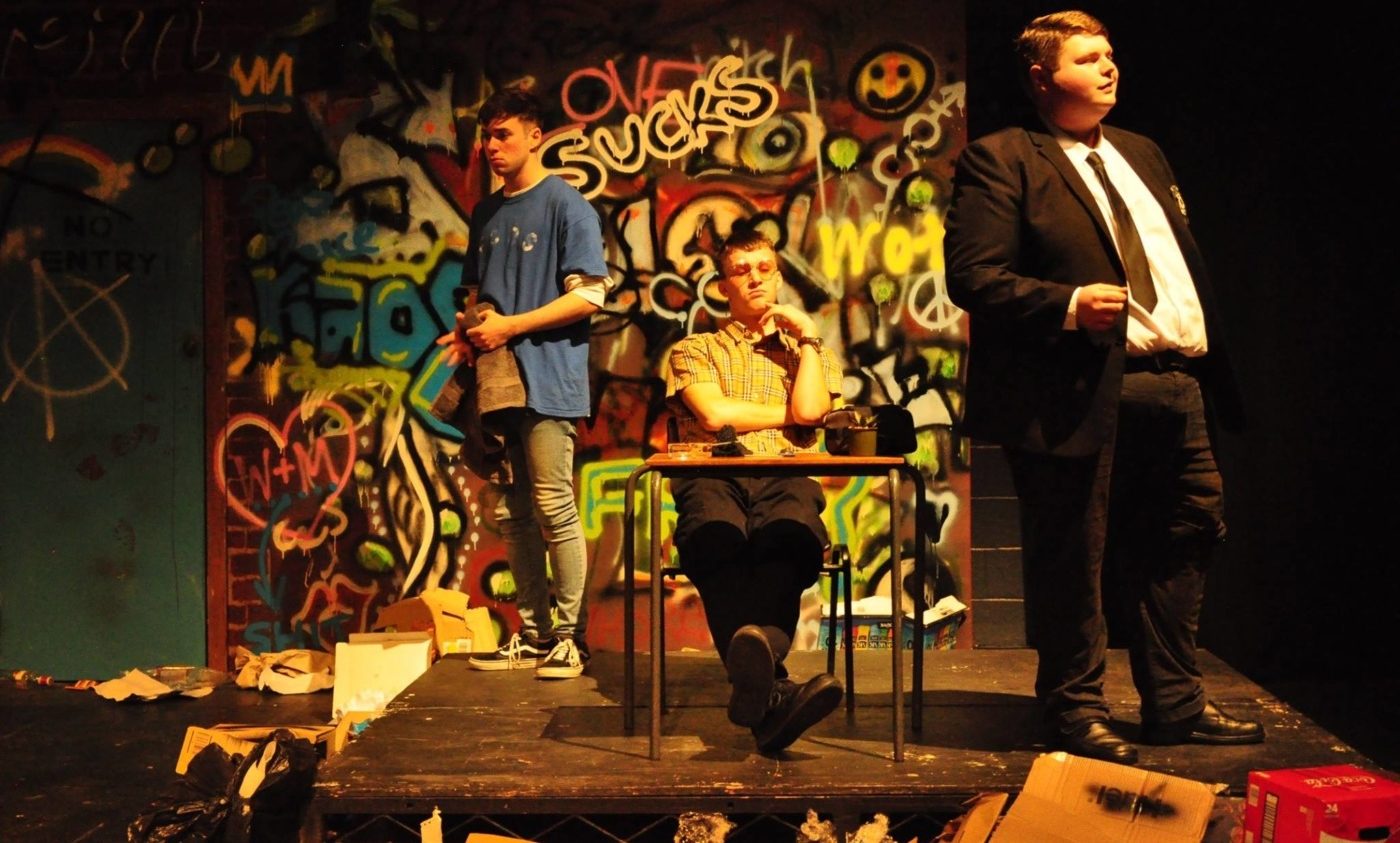“A high-octane, pulsating club scene”: a review of WUDS’ ‘Woyzeck’
Dealing with the dehumanising effects of poverty, the medical profession and the military, Woyzeck is a play that focuses on the progressive descent of its eponymous character into madness. He undergoes demeaning medical trials and suffers the disdain of his superiors in exchange for small sums of money used to raise his illegitimate child. Left unfinished at Büchner’s death in 1837, Woyzeck is by nature a fragmentary tale, giving co-directors Kate Chalmers and Molly Parker, and producer Niall McDaid, additional scope for re-interpretation. They do this convincingly by relocating Woyzeck to a high-octane, pulsating club scene, in which Woyzeck’s madness and desire to numb his pain is partially mirrored in his fellow clubgoers.
This UV-lit, drug-fuelled social context is excellently evoked with brilliant set design, music, lighting and costume design
The piece transposes Büchner’s 1837 text – translated from the original German by John Mackendrick – to the context of 1990s Soho rave culture. This UV-lit, drug-fuelled social context is excellently evoked with brilliant set design, music, lighting and costume design. These are major strengths of the play and go a long way in making the piece a fully immersive experience. The rave scenes are particularly strong, and fully transform the onstage ambience. The actors take on the role of an almost classical chorus, dancing in some chaotic scenes in unison, and taking the role of silent observers in others, with odd yet well-delivered monologue.
Whilst this shift to a more modern setting leads to excellent and inventive staging, it presents a few anachronisms that are at times disorienting, such as the lack of uniform as a signifier of profession, and the level of focus on the fact that Marie and Woyzeck’s child was born out of wedlock. This sense of disorientation, however, does generally add to the overwhelming sense of madness within the piece, even if it is occasionally at the expense of clarity.
The rave scenes are particularly strong, and fully transform the on-stage ambience
The piece was full of very strong performances. Jacob Buckley’s performance as a self-righteous and self-justifying captain was superb with every fleeting emotion etched transiently onto his face. George Chopping as Woyzeck brilliantly captured his inner turmoil and, and ever-increasing detachment from reality. Emily Wilkinson as Marie successfully portrayed a conflicted and at times guilt-ridden mother, in many ways as trapped as the eponymous Woyzeck, though subject to a completely different system of pressures. Matthew Anderson convincingly portrayed the dubious character of the drum major, who comes to rival Woyzeck. The whole cast brilliantly evokes their social milieu throughout.
The play examines major themes such as, most notably, madness. This insanity is successfully reproduced through the acting, set and choreography, and it is often unclear if we are perceiving the world as Woyzeck comes to understand it, or if wider society is itself symptomatic of Woyzeck’s madness. The madness does certainly appear to be refracted through many of the other characters, such as the Doctor (portrayed by Maya McQueen), who is far more concerned with notions of ‘science’ and ‘experimentation’ than humanity. A significant amount of biblical imagery appears throughout the play, such as the constant allusions to purity and sin. Woyzeck himself becomes obsessed with the notion of ‘hot’ and ‘cold’, with heat seemingly connoting the fires of hell, and ‘cold’ increasingly associated with death. In one scene, in response to his superior’s discourse of self-aggrandisement, Woyzeck replies that “you have to be rich to have morals”. In his mind, he was destined to fail from the start.
Woyzeck is at the Warwick Arts Centre until Saturday 24th November. Tickets are available here.

Comments
Comments are closed here.